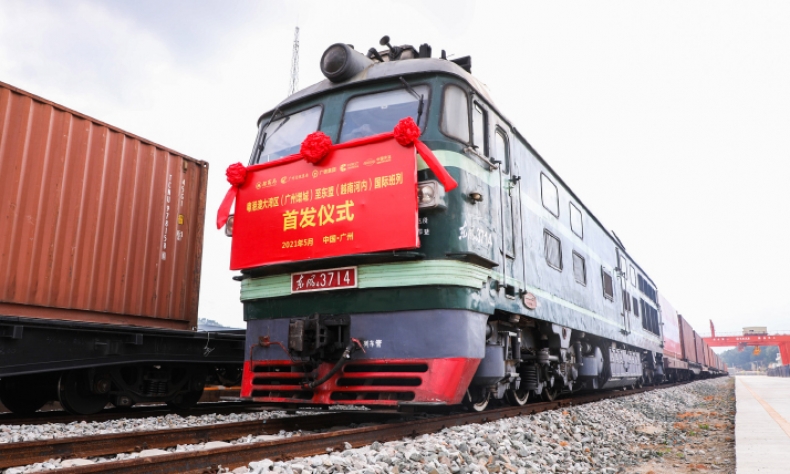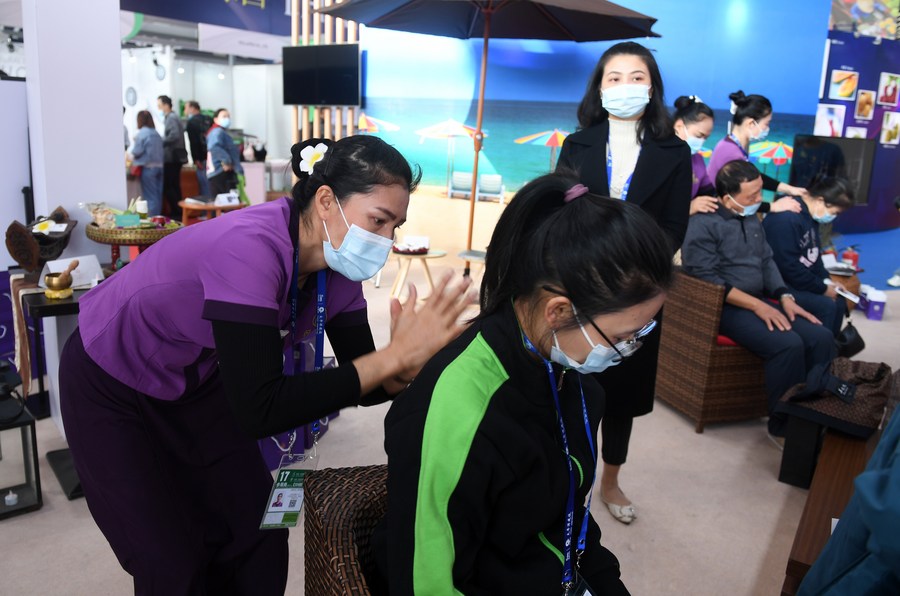China and ASEAN Continue to Contribute to Regional Prosperity

The establishment of the China-ASEAN community with a shared future will see to it that they jointly continue to contribute to regional peace, stability and prosperity.
The year 2021 marks the 30th anniversary of the establishment of the dialogue partnership between China and the Association of Southeast Asian Nations (ASEAN). Over this period, cooperation between China and ASEAN countries has continuously progressed, turning both sides into strategically important players within the Asia-Pacific region.
Achievements
The past decades witnessed the improvement of bilateral relations across various fields. They have not only established a strategic partnership and a free trade area to strengthen their practical cooperation, but also extended their cultural and people-to-people exchanges, and enhanced security ties by combating common threats. Moreover, by preserving close coordination and cooperation on both international and regional issues, they have played a key role in stabilizing the region. China and ASEAN have been jointly building a closer community with a shared future in recent years.
In 1991, China was invited to participate in ASEAN-related meetings, starting forging a relationship with the countries involved. However, due to the impact of the Cold War, ASEAN countries’ trust toward China, at that time, was relatively low. With the involvement of China in the ASEAN-centered regional mechanism, especially China’s help in overcoming the financial crisis of 1997-98, the previously held perspective on China started to change. In the aftermath, specifically since 2001, relations between China and ASEAN countries grew to become highly encouraging.
Among all ASEAN dialogue partners, China took the lead in acceding to the Treaty of Amity and Cooperation in Southeast Asia and established a strategic partnership with the bloc in 2003. From 2008 to 2012, China created comprehensive strategic cooperative partnerships with five countries on the Indochina Peninsula. Moving forward, Chinese President Xi Jinping visited Indonesia and Malaysia in 2013 to upgrade the relationship with the two countries to a comprehensive strategic partnership. Afterward, China established an all-round cooperative partnership with Singapore, a strategic cooperative partnership with Brunei, as well as comprehensive strategic cooperative relations with the Philippines. Currently, China and ASEAN are in talks to forge a higher level of strategic partnership.
In 2020, trade volume between China and ASEAN reached $685 billion, exceeding the China-U.S. and China-EU volume. But in 1991, this number stood below $8 billion. ASEAN has become the biggest trading partner for China and China has remained ASEAN’s top trading partner for 12 years running, since 2009.
Meanwhile, within the framework of the Belt and Road Initiative, China and ASEAN countries are jointly launching multiple infrastructure projects. The Jakarta-Bandung Railway in Indonesia, the China-Laos Railway, the China-Indochina Peninsula Economic Corridor and the New International Land-Sea Trade Corridor, a trade and logistics passage jointly built by Singapore and provincial-level regions in west China, are all under construction, with Southeast Asia proving an important region for the implementation of the initiative.
Peace and security within the region remain a top priority. Maritime security is a sensitive matter for China and ASEAN countries because of the South China Sea issue. Nevertheless, in the past three decades, a consensus has been reached to collaborate in maintaining peace and stability in the region. In 2002, China and ASEAN signed the Declaration on Conduct of Parties in the South China Sea, laying the foundations for the formulation of the Code of Conduct (COC) in the South China Sea. In 2019, a first reading of the COC text was completed and the COC negotiations have accelerated from then on.
Both sides have also instituted a defense minister’s meeting, launched a hotline to deal with maritime emergencies and adopted the Code for Unplanned Encounters at Sea in the South China Sea.

Hurdles and bottlenecks
Though the past decades have witnessed many achievements, China and ASEAN countries have also encountered their fair share of challenges.
The biggest challenge has been U.S. interference. In the first half of 2020 alone, the U.S. dispatched around 2,000 fighter jets and warships to the South China Sea and two U.S. carrier groups conducted joint exercises there, sparking concern of China and ASEAN countries.
The U.S. and several other countries outside the region have proposed the construction of a new regional architecture. For example, the U.S., Japan, India and Australia suggested several initiatives to promote the so-called Indo-Pacific cooperation, which emphasize security assistance and exclude China. Moreover, the quartet cooperation between the U.S., Japan, India and Australia attempted to include a number of ASEAN nations, disrupting the existing regional architecture and ASEAN centrality that China has all along firmly supported.
The COVID-19 pandemic, too, has presented a variety of difficulties. Compared with the U.S. and European nations, although the number of confirmed cases in Southeast Asia is relatively low, the outbreak may have some political, economic and social repercussions, like rising unemployment and poverty, or political instability in some countries. These challenges, if not properly managed, will result in a grave impact on the development of the nations involved and on China-ASEAN relations at large.
A promising future
Based on solid groundwork, China and ASEAN countries will further enhance their partnership and explore new areas for collaboration.
First, this will present an excellent opportunity for concerted efforts in the fight against COVID-19, including the establishment of a regional public health system, the sharing and joint production of vaccines, and the reinforcement of economic teamwork. Among these, the digital economy, such as the 5G network, smart city building and e-commerce, will serve as major drivers for common prosperity. At the same time, in the post-pandemic era, China and ASEAN nations can tighten the people-to-people bonds, especially to boost media cooperation including social media, communication between religious groups, educational exchanges between and training of young people, or dialogue and joint research between think tanks.
Second, China and ASEAN countries can continue to solidify their regional and sub-regional cooperation. At the regional level, the Regional Comprehensive Economic Partnership agreement was officially signed by China, Japan, the Republic of Korea, Australia, New Zealand and the 10 ASEAN countries on November 15, 2020. The largest free trade area in the world is expected to be realized this year to promote free trade and multilateralism against the backdrop of prevailing trade protectionism, unilateralism and anti-globalization. This will not only inject strong impetus into regional and global economic recovery, but also deepen the comprehensive economic cooperation between China and ASEAN.
All in all, the establishment of the China-ASEAN community with a shared future will see to it that they jointly continue to contribute to regional peace, stability and prosperity.
Luo Yongkun is deputy director of Southeast Asian and Oceanian Studies at the China Institutes of Contemporary International Relations.
 Facebook
Facebook
 Twitter
Twitter
 Linkedin
Linkedin
 Google +
Google +










